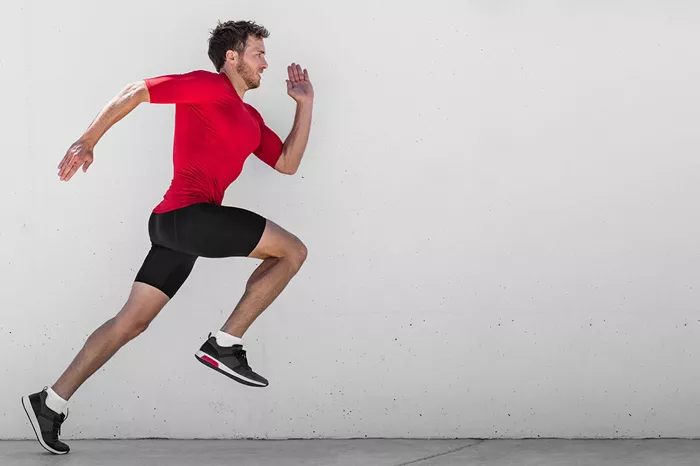Runners need more than just cardio. Strength training helps build muscle, support joints, and improve balance. It also reduces the risk of injury. When combined with running, strength work improves performance and endurance.
Benefits of Strength Training for Runners
Strength training offers several advantages. It improves muscular endurance, supports better posture, and boosts power for uphill climbs. Here are some key benefits:
- Increases joint stability
- Improves running economy
- Supports injury prevention
- Enhances overall strength and power
How to Include Strength Work in a Running Routine
Plan strength sessions two to three times a week. Schedule them on non-running days or after easy runs. Focus on large muscle groups. Use body weight, resistance bands, dumbbells, or kettlebells. Runners benefit from short and effective routines.
Top 12 Strength Training Exercises for Runners
1. Squats
Squats build strong quads, hamstrings, and glutes. These muscles power every stride. Start with bodyweight squats. Progress to goblet squats or barbell squats as strength improves.
2. Deadlifts
Deadlifts train the posterior chain. They strengthen the hamstrings, glutes, and back. They improve posture and reduce back strain. Deadlifts also enhance running power.
3. Lunges
Lunges develop unilateral leg strength. They mimic the running stride. Lunges also help fix muscle imbalances. Use dumbbells for added resistance.
4. Step-Ups
Step-ups are great for building single-leg strength. Use a sturdy bench or box. Hold weights for resistance. Focus on controlled movements to engage glutes and quads.
5. Planks
Planks strengthen the core. A strong core improves balance and form. Runners benefit from static core exercises like planks because they prevent excessive motion and fatigue.
6. Russian Twists
Russian Twists target obliques. Strong obliques support side-to-side movement. This helps runners stabilize during turns and uneven terrain.
7. Bridge Exercise
The bridge exercise activates glutes and hamstrings. It also engages the lower back. Bridges are essential for correcting underactive glutes in runners.
8. Calf Raises
Strong calves help push off the ground with power. Calf raises improve ankle strength. This helps reduce the risk of Achilles and foot injuries.
9. Dumbbell Rows
Dumbbell rows strengthen the upper back. This promotes better posture during long runs. They also help reduce slouching, which can affect breathing and stride.
10. Kettlebell Swings
Kettlebell training improves explosive power. Swings target hips, glutes, and core. This movement improves speed and rhythm in running.
11. Single-Leg Deadlifts
This balance-intensive movement builds unilateral strength. It corrects muscle imbalances. Single-leg deadlifts enhance coordination and reduce the risk of falls.
12. Core Circuits
A mix of crunches, leg raises, and planks provides a balanced core workout. A strong core aids in efficient breathing, upright posture, and stable movement patterns.
Best Practices for Runners Starting Strength Training
Start Slow and Focus on Form
Form matters more than weight. Poor technique increases injury risk. Start with light weights and master each movement. Focus on slow, controlled repetitions.
Progressive Overload is Key
To get stronger, runners should follow progressive strength training. Gradually increase resistance, reps, or intensity. This helps muscles adapt and grow stronger without overtraining.
Don’t Skip Recovery
Recovery is vital. Muscles need time to rebuild. Include at least one full rest day each week. Sleep and nutrition also support muscle repair and performance.
When Should Runners Do Cardio and Strength?
Many ask: should I do cardio after strength training? The answer depends on goals. If running performance is the priority, do cardio first. If strength is the goal, lift weights first. Alternatively, split cardio and strength on different days.
Combining Strength Training with Endurance Runs
Runners can combine strength work with running by:
- Doing strength work after easy runs
- Pairing short strength sessions with interval training
- Using endurance training for both cardio and muscular improvements
Tips for Designing a Runner-Specific Strength Routine
Choose Compound Movements
Use compound strength training exercises. They engage multiple joints and muscles. This builds full-body strength. Compound moves mimic natural running motions.
Use Functional Strength Training
Functional strength training improves balance and movement efficiency. It includes exercises that simulate real-life motions like running, jumping, or twisting.
Prioritize Core and Leg Work
Leg and core strength power your stride. Focus on squats, lunges, planks, and twists. These exercises improve both power and balance.
Include Rest and Recovery
Rest is part of training. Overworking leads to fatigue and injury. Follow a weekly plan that includes recovery days, sleep, and proper hydration.
Conclusion: Stronger Runners Last Longer
Runners who include strength training improve endurance, power, and efficiency. The 12 exercises listed here are simple but effective. They target key running muscles. Adding strength to your training makes you a faster and safer athlete.
Bonus: Sample Weekly Strength Plan for Runners
- Monday: Easy run + core training (planks, Russian twists)
- Tuesday: Leg workout (squats, lunges, calf raises)
- Wednesday: Rest or light yoga
- Thursday: Full body (deadlifts, rows, bridges)
- Friday: Easy run + kettlebell swings
- Saturday: Long run
- Sunday: Rest or active recovery
Conclusion
Incorporating these 12 strength training exercises into your routine will improve your running performance, reduce the risk of injury, and enhance your overall fitness. Remember to follow a structured strength training program for runners, and progressively increase the intensity to ensure optimal results.

